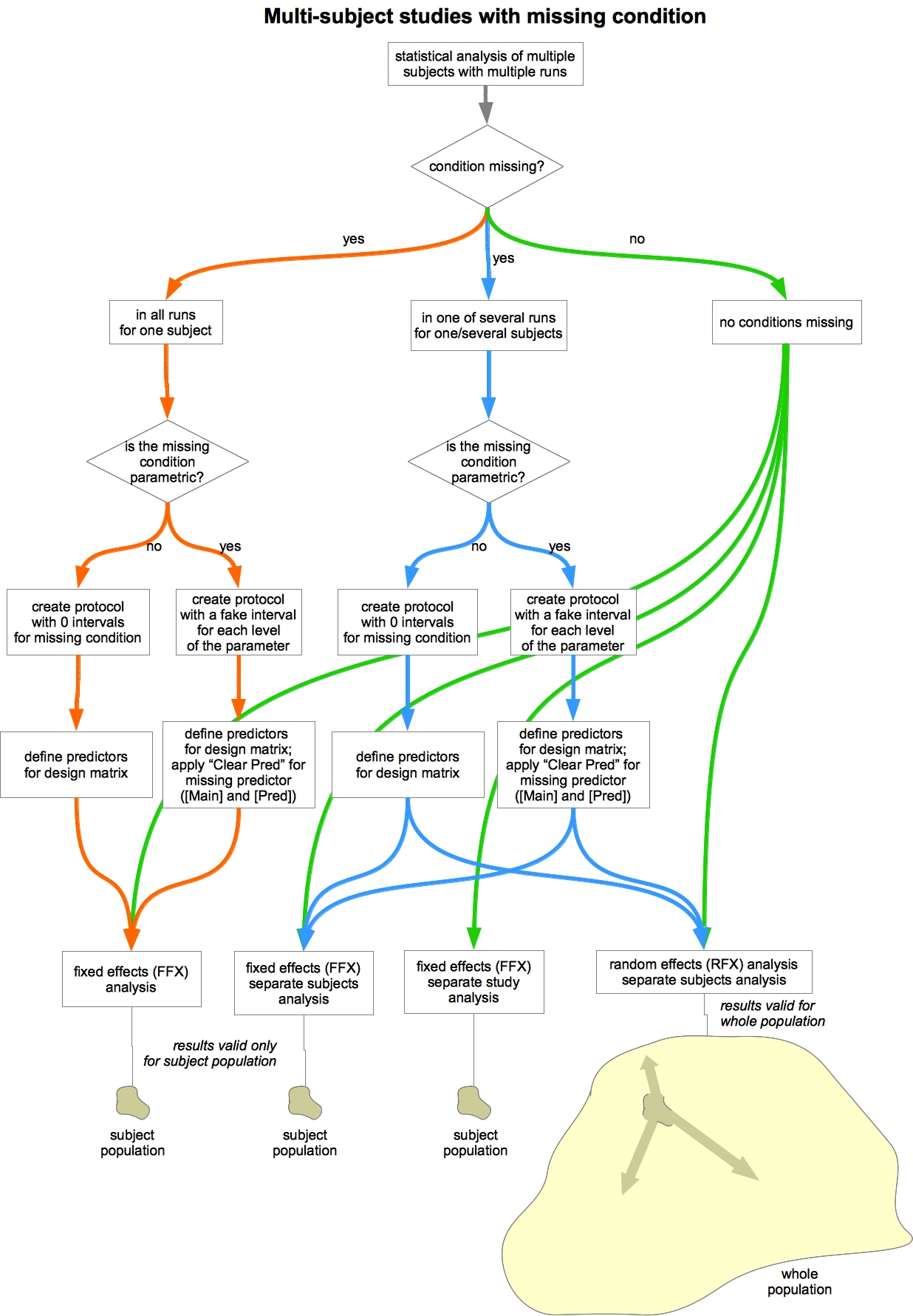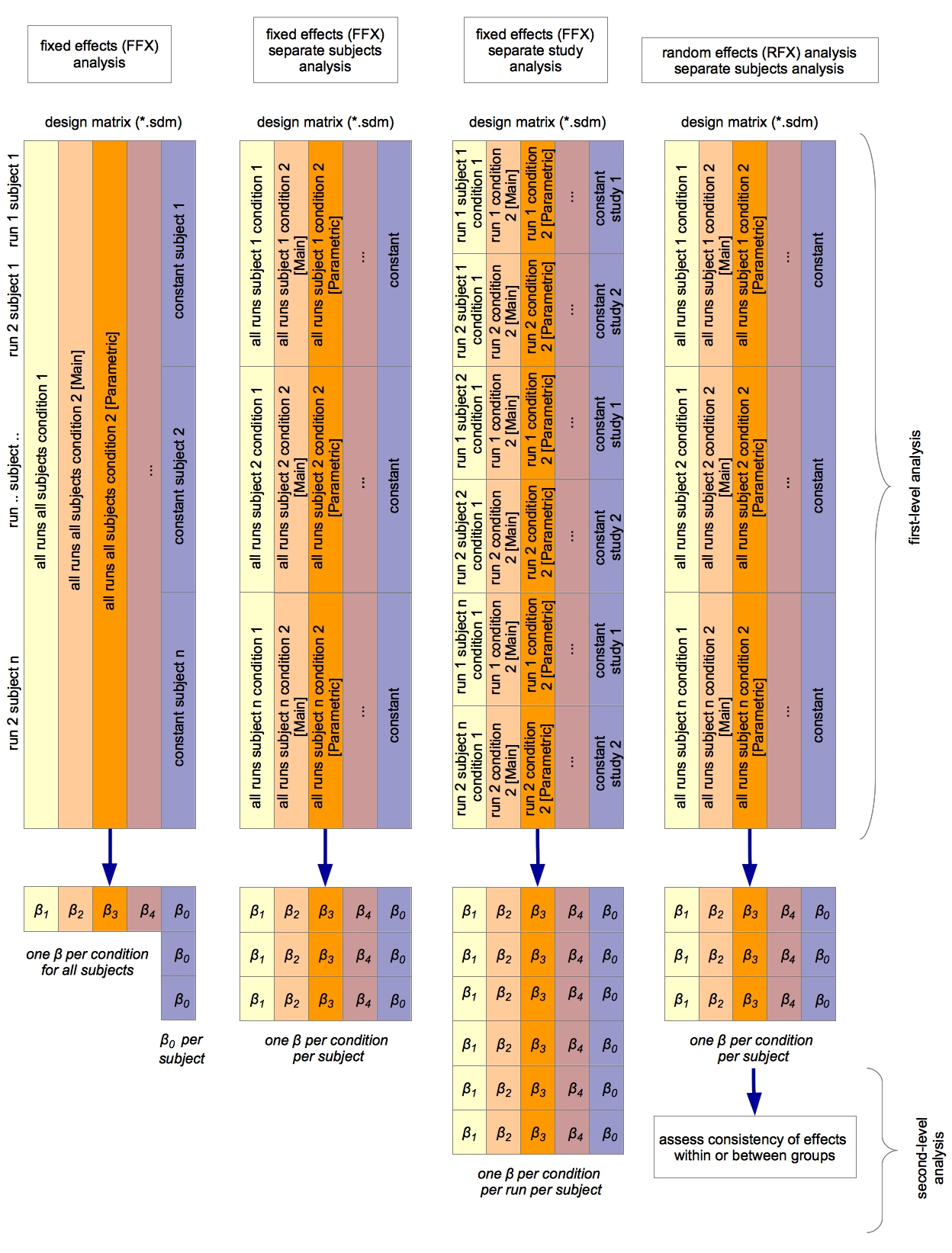The analysis of effects across participants requires the same number and the same order of predictors of interest for each participant. Confound predictors can vary across participants and runs.
But what can be done if certain predictors were only presented in a single run or if some predictors are missing for some participants (e.g. hits and misses for behavioral responses)?
The flow chart below illustrates possible pathways for multi-subject designs with missing condition(s) in functional runs. For missing parametric conditions, please see the workaround below.
One option to deal with such cases is the addition of empty 'dummy' predictors in the single study design matrices, i.e. dummy coding. These dummy predictors are represented by empty (fake) conditions in the stimulation protocol (PRT) of the respective functional run.
Note:
A 'fake' interval is an empty condition in the stimulation protocol (PRT) with no intervals. The stimulus condition was not presented in the functional run, but is still listed in the stimulation protocol (with 0 intervals).
An example empty condition within a PRT would look like this:
faces
0
Color: 255 0 0

The resulting design matrices and beta values are illustrated below:

Workaround for missing parametric condition
How to make the parametric design matrix work when a condition does not appear in all protocols:
For conditions that do not appear in all protocols, one creates an empty condition with 0 intervals for multi-subject studies.
However, a condition with 0 intervals in a parametric protocol does not generate a parametric predictor in a parametric design matrix (*.sdm). To add an empty parametric predictor in such a case, add an empty predictor in the "Single Study General Linear Model" dialog right after the empty main predictor by clicking "Add Pred" and give it the same name as the parametric predictors in the design matrices of the other subjects, e.g.
StimulusType1[Main]
StimulusType1[Parametric]
When creating an *.mdm, all protocols will have the same number of predictors (and the same order of predictors). For advice on parametric modulation, please see the article GLM and Parametric Modulation of Predictors.
Special case: sparse predictors
In case behavioral responses or hit rates of participants are included in the design matrix and one participant has no errors, one can split the response values for all participants in two predictors:
- the 'good' values (or hits) become a predictor of interest (as predictors of interest need to be the same (and in the same order) for all participants and runs
- the `wrong' values (or misses) become a confound predictor (as confound predictors do not have to be the same in all runs and participants)